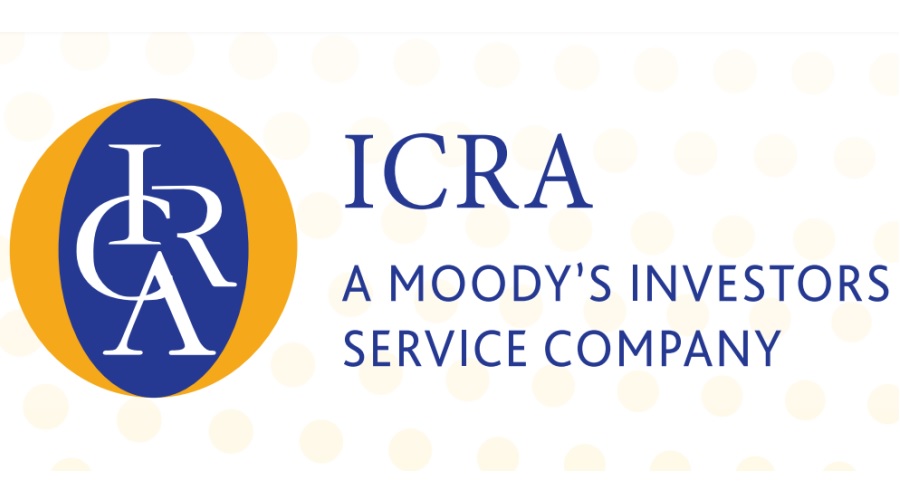 Cipla Launches India's First Dedicated Lung Health Diagnostics Center in Delhi
Cipla Launches India's First Dedicated Lung Health Diagnostics Center in Delhi Ms. Aditi Nayar, Chief Economist at ICRA Ltd On the Fiscal Deficit
Ms. Aditi Nayar, Chief Economist at ICRA Ltd On the Fiscal Deficit Authum Investment & Infrastructure Ltd recommends 4:1 bonus issue
Authum Investment & Infrastructure Ltd recommends 4:1 bonus issue SBI Capital Markets Report on Q2FY26 GDP - From Capex to Consumption: How Policy Initiatives Sparked a GDP Beat
SBI Capital Markets Report on Q2FY26 GDP - From Capex to Consumption: How Policy Initiatives Sparked a GDP Beat POSTURA: A Wall-Hung Closet Shaped for Comfort, Crafted for Everyday Life
POSTURA: A Wall-Hung Closet Shaped for Comfort, Crafted for Everyday Life
Research
Ms. Aditi Nayar, Chief Economist at ICRA Ltd On the Fiscal Deficit
Posted On : 2025-11-28 18:51:54( TIMEZONE : IST )

"The Government of India's (GoI's) fiscal deficit expanded to Rs. 8.3 trillion or ~53% of the FY2026 BE during April-October FY2026 from Rs. 7.5 trillion (~48% of PE) in the year ago period, led by a 32% surge in capex. Encouragingly, the revenue deficit narrowed to Rs. 2.4 trillion in April-October FY2026 from Rs. 3.0 trillion in April-October FY2025, as revenue expenditure remained flat, and non-tax revenues surged by 22%, offsetting the 2% contraction in net tax revenues that was led by higher tax devolution to the states.
The GoI's gross tax revenues expanded by a robust 14% in October 2025, albeit on a low base; overall, gross tax revenues rose by a tepid 4.0% YoY during April-October FY2026, amid a 6.9% rise in income tax collections, and a subdued 5.2% growth in corporate tax collections. The rise in indirect tax collections was quite weak at just 2.6% in April-October FY2026, amid a 2.5% contraction in customs duties and a 6-8% growth in CGST and excise duty collections.
With the later deadline for personal income tax behind us, the base effect has largely normalised. Given this, the steep ask of 24% in the remaining months to meet the FY2026 BE appears challenging. Notably, CGST collections need to rise by ~18% during the last five months of the fiscal, which suggests a miss on this account.
Meeting the FY2026 BE requires a steep YoY expansion of 22% in gross tax revenues in November-March FY2026. Given this, ICRA is apprehensive that gross tax revenues will undershoot the budgeted target of Rs. 42.7 trillion by ~Rs. 1.2-1.5 trillion. This would be partly offset by the expected overshooting of ~Rs. 0.5 trillion in non-tax revenues, on account of the higher-than-budgeted RBI surplus transfer to the GoI.
The GoI's capex contracted by 28% in October 2025, after rising by 31% in Q2 FY2026, possibly on account of the festive holidays. Nevertheless, during April-October FY2026 it expanded by 32% YoY to Rs. 6.2 trillion, amounting to ~55% of the FY2026 BE as against ~44% in the year ago period. Owing to the upfronting seen in the first half of the fiscal, capex needs to contract by ~14% YoY during November-March FY2026 to remain within the FY2026 BE, unless the allocation is enhanced.
The GoI's non-interest non-subsidy revex has declined by 6.4% during April-October FY2026, which implies that this needs to expand by a high ~28% during the last five months of the fiscal to meet the FY2026 BE. This is unlikely and could lead to sizeable savings, which would offset the shortfall on the receipts side.
Overall, we believe that higher-than-budgeted non-tax revenues would absorb a part of the shortfall on the taxes front. On the expenditure side, while there could be some additional allocation towards the fertiliser subsidy and any supplementary demand for grants, if announced, this would be offset by the expenditure savings of various ministries, in line with the typical trend seen during a fiscal. Consequently, we do not expect a material fiscal slippage at the current juncture."
